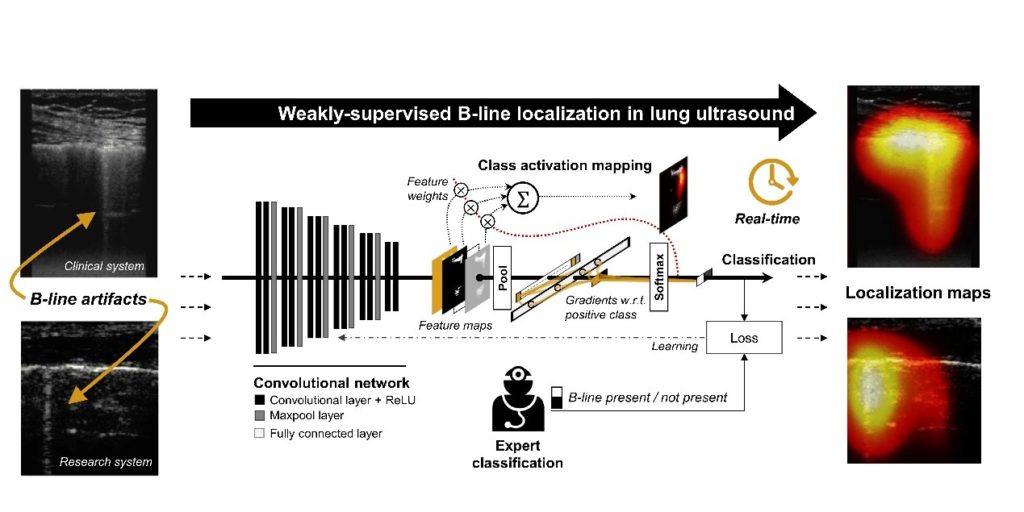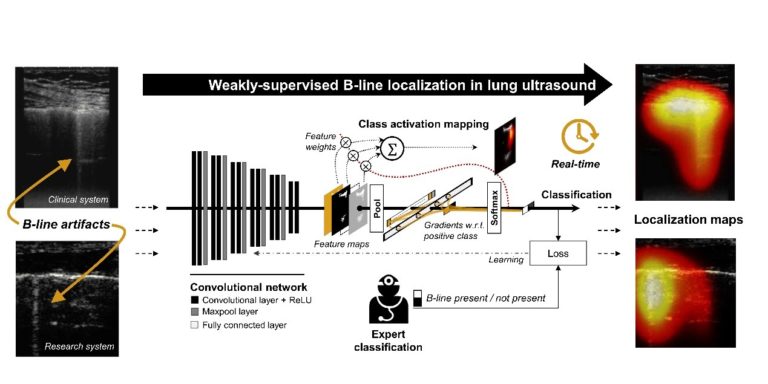
Lung ultrasound (LUS) is nowadays gaining growing attention from both the clinical and technical world. Of particular interest are several imaging-artifacts, e.g., A- and B- line artifacts. While A-lines are a visual pattern which essentially represent a healthy lung surface, B-line artifacts correlate with a wide range of pathological conditions affecting the lung parenchyma. In fact, the appearance of B-lines correlates to an increase in extravascular lung water, interstitial lung diseases, cardiogenic and non-cardiogenic lung edema, interstitial pneumonia and lung contusion. Detection and localization of B-lines in a LUS video are therefore tasks of great clinical interest, with accurate, objective and timely evaluation being critical. This is particularly true in environments such as the emergency units, where timely decision may be crucial. In this work, we present and describe a method aimed at supporting clinicians by automatically detecting and localizing B-lines in an ultrasound scan. To this end, we employ modern deep learning strategies and train a fully convolutional neural network to perform this task on B-mode images of dedicated ultrasound phantoms in-vitro, and on patients in-vivo. An accuracy, sensitivity, specificity, negative and positive predictive value equal to 0.917, 0.915, 0.918, 0.950 and 0.864 were achieved in-vitro, respectively. Using a clinical system in-vivo, these statistics were 0.892, 0.871, 0.930, 0.798 and 0.958, respectively. We moreover calculate neural attention maps that visualize which components in the image triggered the network, thereby offering simultaneous weakly-supervised localization. These promising results confirm the capability of the proposed method to identify and localize the presence of B-lines in clinical lung ultrasonography.

